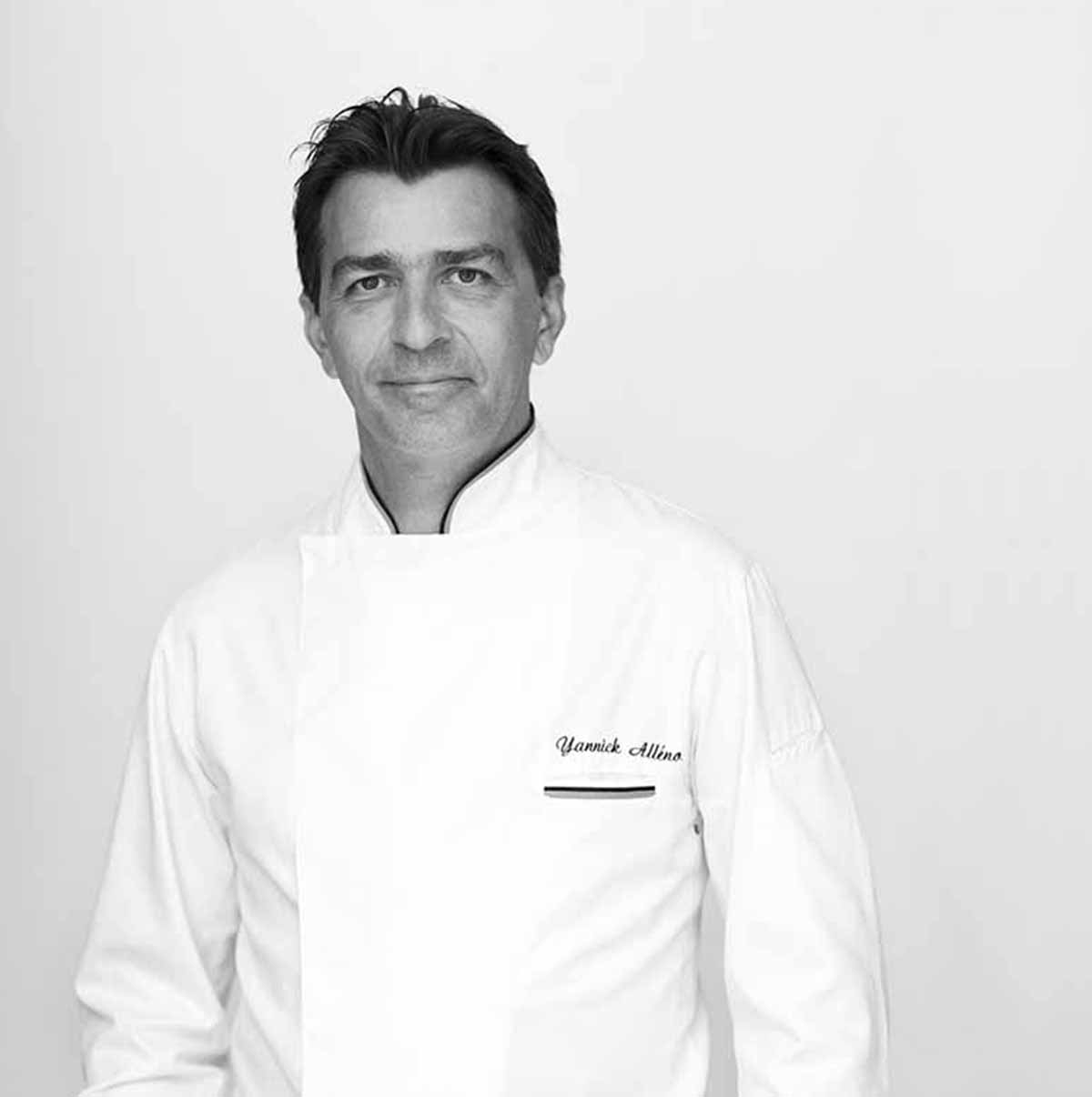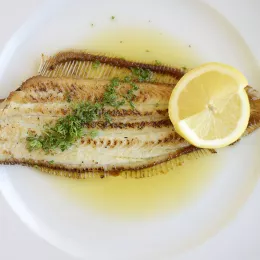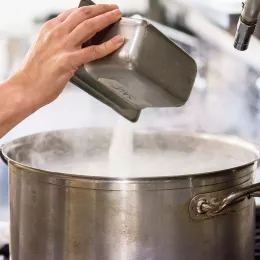Yannick Alléno may not be a household name in culinary circles in the United States, but he is a chef on the cutting edge of avant garde contemporary sauce-making techniques. He’s the president and founder of Groupe Yannick Alléno, but more importantly, he is the chef-proprietor of Le Pavillon Ledoyen restaurant in Paris, which has been rated as one of the top restaurants in the world in numerous guides and received its first three-star rating in the 2015 Michelin Guide for France.
Chef Alléno’s work makes an important contribution to modern French cooking.

I recently came upon two of Chef Alléno’s books: the encyclopedic Ma Cuisine Française, and his smaller, ground-breaking volume Sauces: Reflections of a Chef. Both works introduce his theories and practical work on the subject of sauces.
He states that, “Sauce is the verb of French cuisine…it is the only thing able to harmoniously bring together two totally different products to form a coherent dish,” and further, that his “goal is to put sauce in the heart of the debate…it was demonized by the health-based offensive that made us believe that sauces were too fatty and starchy and bad for our health.” Chef Alléno continues that, “If the collective subconscious is convinced of this today it is because sauces were poorly made for years.”
To me, this pretty much sums up the four to five hundred years of the history of French sauces, bringing us to the status quo today. Alléno speaks of the three distinct historical phases in classic and modern sauce-making.
First, the classical or grand cuisine era, based on the principles of the “mother sauces” that were finally codified by Marie-Antoine Carême in the early 19th century. Second, the period of refinement of the “mother sauces” and their compound derivatives in the latter part of the 19th century and into the early 20th century, as embodied in the work of Auguste Escoffier. The third phase was the “nouvelle cuisine” of the late 1960s through the early 1980s, the principles of which were laid down by chefs like Fernand Point, Paul Bocuse, Alain Chapel, the Troisgros brothers, Roger Vergé and Michel Guérard.
These sauces were prepared with no starch. Rather, the thickening occurs through natural reduction, emulsification, and binding and thickening through the incorporation of final liaisons such as butter, purée of foie gras, animal blood, egg yolks or cream, among many other possible ingredients.
Chef Alléno has spent the better part of his career reinterpreting, for contemporary palates, what he considers to be the four most important sauces: tomato sauce, Hollandaise/Béarnaise sauce, jus de veau (the nouvelle cuisine version of a classic French demi-glace sauce) and chicken extraction.
The techniques that Chef Alléno uses are based on the principles of sous vide cooking: utilizing the process of slow infusion or extraction over very low heat, with temperatures ranging from 84 to 88 degrees Fahrenheit based on the texture and molecular composition of the ingredient, whether it be a vegetable like celery root, Jerusalem artichokes or mushrooms, or a protein like fish bones, chicken carcass or crustacean shells.
Once the sauce base has been created, the next stage is a technique known as cryo-concentration. The extracted liquid is placed in a centrifuge, which in turn freezes the liquid. The frozen liquid is then slowly defrosted to extract all the concentrated flavors of the base with minimal water content, which rises to the top during freezing.
The remaining liquid with higher water content can then be cryo-concentrated as well. Each individual extraction can be utilized as a “mother sauce” and combined with other extractions to create an unlimited number of variations — for example, lobster and mushroom. The evaporation stage can be done two to three times. This also has the effect of creating sauce bases with a much higher level of clarity as well as more intensely flavored.
The cryo-concentration technique is not a recent innovation. It has been a technique used for hundreds of years to produce “ice” ciders and wines, as well as certain types of beers, particularly lager-style beers. Chef Alléno’s genius is that he has adapted these age-old techniques for the preparation of modern sauces. In Sauces, he lays out the technique for making a modern variation of a classic sauce Poulette — traditionally, a starch-thickened fish velouté finished with a liaison of egg yolks and cream.
His method calls for cooking fish carcasses sous vide and as soon as all the albumin is extracted from the bones, use that albumin to make the sauce. This yields a sauce with a very intense, ocean-like flavor, and one that isn’t diminished by the addition of too much starch or fat. The sauce is finished with a liaison of judicious amounts of butter.
Chef Yannick Alléno’s work is just one example of a current culinary approach that defies and dispels the myth that modern French cuisine is dead. The way I see it, it’s still vibrant, organic and constantly evolving.
Ready to study sauce making and more with Chef Ted? Learn more about ICE’s culinary arts program.




